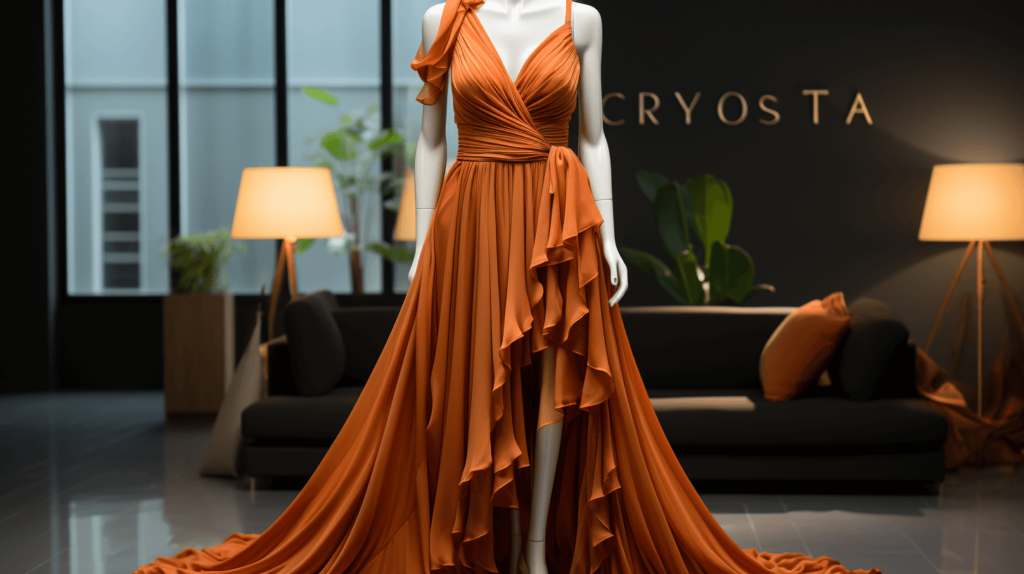Table of Contents
- Introduction
- The Importance of Choosing the Right Fabric
- In-depth Look at Popular Fabrics for Apparel
- Comparing Polyester, Rayon, and Spandex
- Applications and Use Cases
- Choosing the Best Fabric for Your Brand
- Care Tips for Long-lasting Fabric Quality
- Conclusion
Introduction
Creating a successful clothing line starts with one fundamental choice: selecting the right fabric. Different fabrics can convey your brand’s identity, influence the product’s functionality, and impact the overall appeal to your target market. In this comprehensive guide, we explore three widely used fabrics—Polyester, Rayon, and Spandex—and provide insights into their characteristics, applications, and care. Whether you’re targeting activewear, casual fashion, or formalwear, understanding these fabrics will empower you to make informed choices for your clothing line.
The Importance of Choosing the Right Fabric
Choosing the right fabric is about more than just aesthetics; it’s a strategic decision that impacts:
- Product Quality: A durable, well-suited fabric enhances the lifespan of the garment and maintains its shape and color.
- Comfort and Fit: Different fabrics provide varying levels of comfort, breathability, and flexibility, which affects the customer’s experience.
- Brand Identity: The fabric choice reflects your brand’s quality and style. For example, high-performance materials position the brand as suitable for active lifestyles, while luxurious textures align with high-end fashion.
- Cost Efficiency: Selecting durable fabrics reduces returns and enhances customer satisfaction, offering long-term value for both brand and consumer.

In-depth Look at Popular Fabrics for Apparel
Polyester
Polyester is a synthetic fabric widely chosen for its durability, versatility, and cost-effectiveness. Here’s a deep dive into what makes it suitable for various applications:
- Characteristics:
- Strength and Durability: Resistant to stretching, shrinking, and abrasion, polyester stands up well to repeated wear.
- Low Moisture Absorption: Polyester’s low absorbency makes it quick-drying and resistant to mold and mildew, beneficial for activewear and outdoor clothing.
- Wrinkle Resistance: Naturally wrinkle-resistant, polyester retains a polished appearance without requiring extensive ironing.
- Common Applications:
- Sportswear: The moisture-wicking capabilities and durability make polyester a go-to for activewear.
- Everyday Casual Wear: Lightweight polyester fabrics are common in t-shirts, casual jackets, and pants.
- Uniforms: Polyester is often used for uniforms due to its durability and color retention.
- Considerations:
- Breathability: Polyester can feel warm in hot climates, which is why it’s often blended with other breathable fabrics for comfort.
- Environmental Impact: Polyester is petroleum-based, which can raise sustainability concerns. However, recycled polyester offers a more eco-friendly option.
Rayon
Rayon is a semi-synthetic fabric that mimics the softness of natural fibers and is celebrated for its lightweight, breathable qualities. Known as a “man-made natural” fabric, rayon combines synthetic processing with natural cellulose material.
- Characteristics:
- Soft Texture: Rayon has a smooth, comfortable feel on the skin, similar to cotton or silk, making it popular in summer and casual wear.
- Highly Breathable: Unlike polyester, rayon is very breathable, helping regulate body temperature, making it ideal for warm climates.
- Beautiful Drape: Rayon flows and drapes gracefully, enhancing the aesthetic of dresses, blouses, and skirts.
- Common Applications:
- Lightweight Dresses: Ideal for summer dresses and flowy outfits due to its airy and breathable nature.
- Blouses and Tops: Rayon’s smooth texture and drape lend sophistication to casual and semi-formal blouses.
- Accessories: Scarves and lightweight shawls often use rayon for its soft, appealing texture.
- Considerations:
- Care Sensitivity: Rayon is prone to wrinkles and requires gentle handling, such as hand washing or dry cleaning.
- Durability: Less durable than synthetic fabrics, rayon may wear out more quickly, especially under frequent washing.
Spandex
Spandex, also known as elastane or Lycra, is highly valued for its stretch and flexibility. This fabric is commonly blended with other materials to add comfort and a snug fit.
- Characteristics:
- Exceptional Elasticity: Known for its ability to stretch up to five times its original length and return to its shape, spandex is key in form-fitting clothing.
- Abrasion Resistance: Durable and resistant to wear, spandex is ideal for clothing that requires frequent movement.
- Lightweight: Despite its strength and flexibility, spandex is lightweight, ensuring ease of movement.
- Common Applications:
- Activewear and Sportswear: Essential for leggings, yoga pants, and compression garments that need flexibility and shape retention.
- Undergarments: Spandex adds stretch and support in bras, underwear, and swimwear.
- Body-fitting Fashion: Dresses, pants, and tops that require a snug fit benefit from spandex’s elasticity.
- Considerations:
- Heat Sensitivity: Spandex should be washed in cool water and air-dried to maintain elasticity.
- Blending Requirement: Typically blended with other fabrics to provide both structure and stretch.
Comparing Polyester, Rayon, and Spandex
| Feature | Polyester | Rayon | Spandex |
|---|---|---|---|
| Durability | Very durable, resistant to wear | Moderate durability, sensitive to washing | Highly durable, retains shape |
| Breathability | Low, may feel warm | High, ideal for warm climates | Low on its own, improved in blends |
| Stretch | Limited stretch | Minimal | Extremely high |
| Texture and Feel | Smooth but synthetic | Soft, natural feel | Flexible and smooth |
| Care Requirements | Machine washable, easy care | Requires delicate care | Sensitive to high temperatures |
| Best Uses | Activewear, outerwear, uniforms | Summer wear, flowy dresses | Athletic wear, undergarments |

Applications and Use Cases
Activewear and Sports Apparel
For activewear, both polyester and spandex offer performance benefits. Polyester’s durability and moisture-wicking properties are ideal for high-intensity activities, while spandex provides the flexibility needed for a wide range of motion. Together, these fabrics create functional and comfortable athletic garments that support the wearer’s movements.
Casual and Summer Wear
In casual and summer wear, rayon’s breathability and natural texture provide comfort in warm weather, while its soft drape adds an elegant touch to casual styles. Blending rayon with spandex can add slight stretch, making garments more comfortable without compromising breathability.
Formal and Semi-Formal Fashion
Rayon’s elegant drape and softness make it a popular choice for formal and semi-formal wear. Polyester can also be used in tailored, structured pieces like blazers and pants, especially when blended with spandex to offer flexibility and comfort without sacrificing the refined look.
Choosing the Best Fabric for Your Brand
When selecting the best fabric for your brand, consider these factors:
- Target Audience Needs: Are you catering to an active, on-the-go audience or one that values casual comfort? Align fabric choices to meet their lifestyle needs.
- Brand Identity and Message: Different fabrics convey different messages. Polyester and spandex may suggest an active, performance-focused brand, while rayon can signal elegance and natural comfort.
- Sustainability Goals: If sustainability is a priority, consider sourcing recycled polyester or sustainably-produced rayon, which aligns with eco-friendly brand values.
- Budget and Production Requirements: Polyester is often cost-effective for large-scale production, while rayon may require more care in handling, affecting production costs.
Care Tips for Long-lasting Fabric Quality
Proper care is essential to maintain the quality and appearance of each fabric:
- Polyester: Machine wash in cold water, tumble dry low, and avoid excessive heat to prevent shrinkage or warping.
- Rayon: Hand wash or use delicate cycle in cold water, lay flat to dry, and avoid wringing out to maintain the fabric’s integrity.
- Spandex: Wash in cool water, air dry, and avoid bleach to retain elasticity.
Selecting the right fabric is crucial to creating a successful and quality-driven clothing line. By understanding the unique properties of Polyester, Rayon, and Spandex, you can align fabric choices with your brand’s vision and customer needs. Explore Tangyifashion’s extensive fabric collection to find high-quality materials tailored to meet the demands of global fashion manufacturers and designers.

